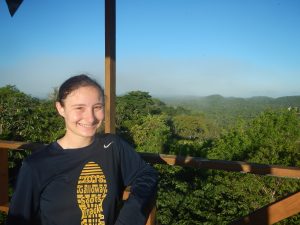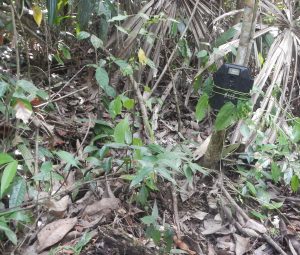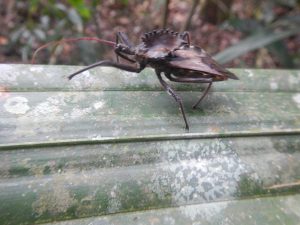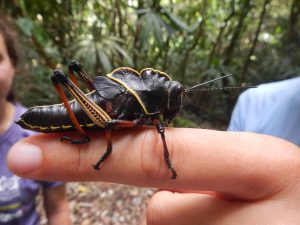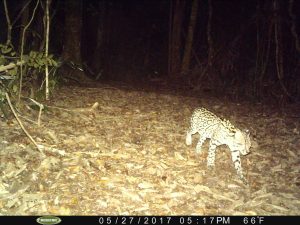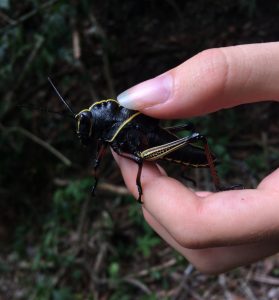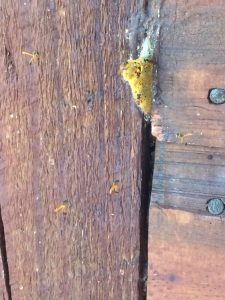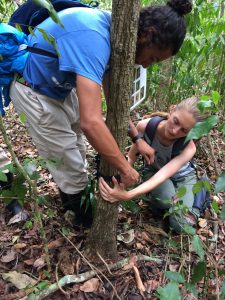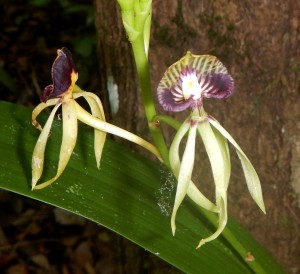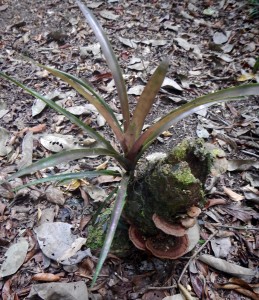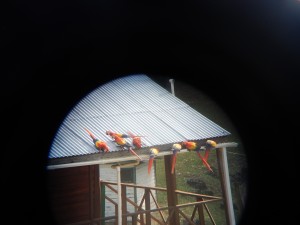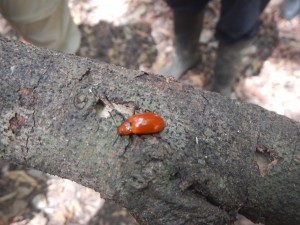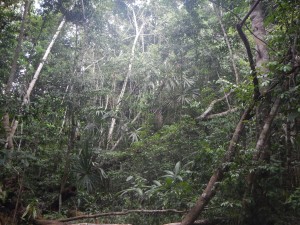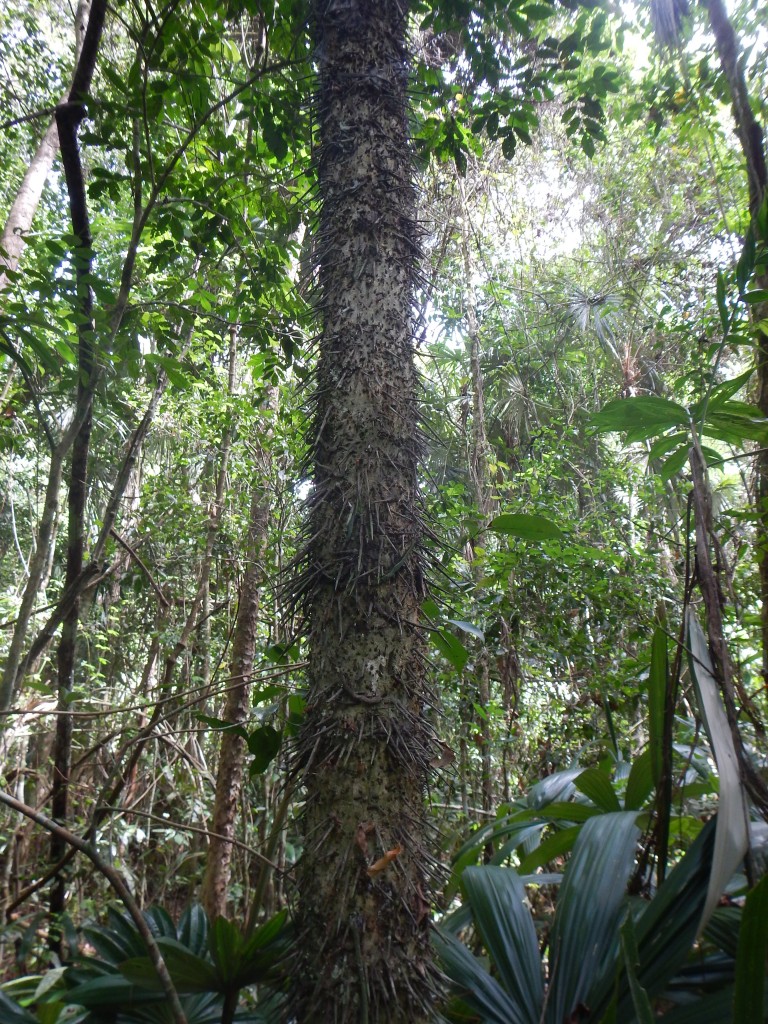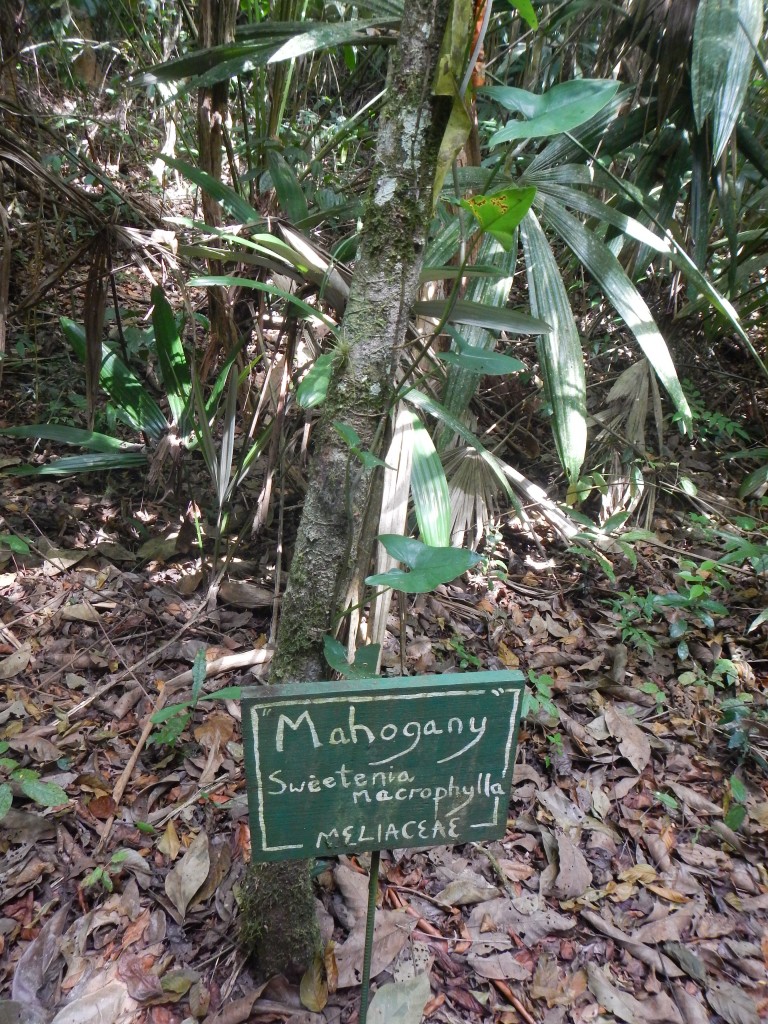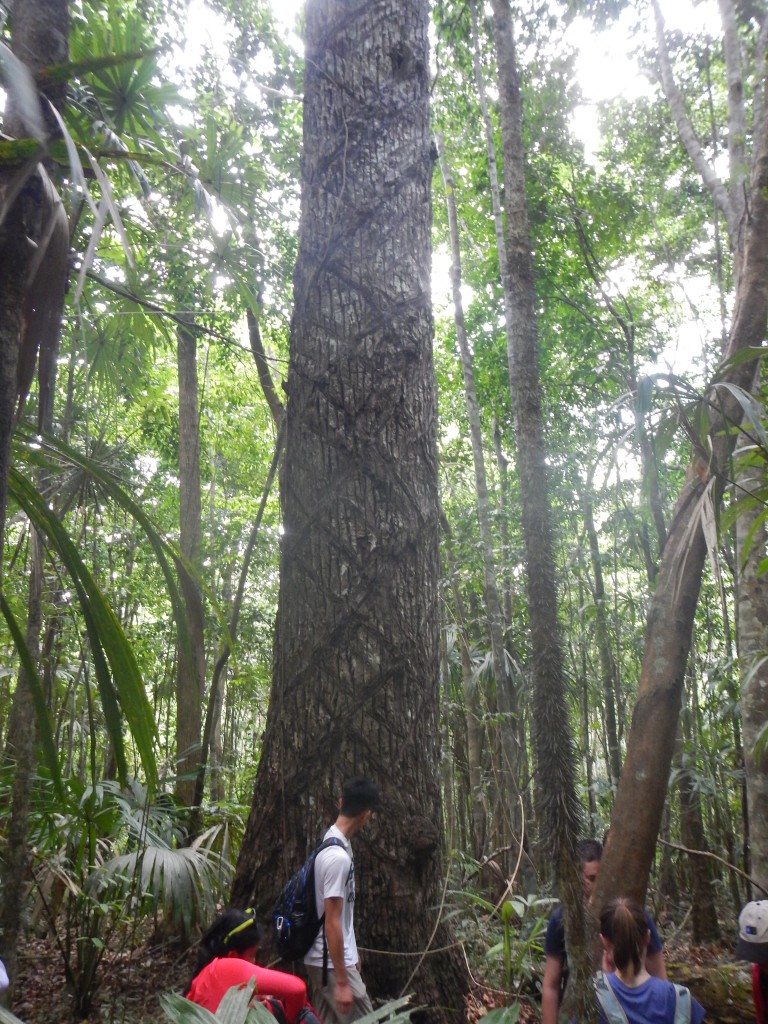Blog Post #7
Day 7: 10 Miles and Several Mammals Later…
Written May 22ndat 6:25 pm
This post was meant to be for yesterday (May 21st), but you are about to find out why I haven’t written it until now.

We started the morning at 4:45 am. We wanted to wake up and reach the Bird Tower around early morning light, but the hike up there is extra steep. So we set our around 5:15 am and headed to the trails. Probably one of the steepest (and slipperiest) hikes I’ve ever been on. I had hoped to see some amphibians since it had rained last night, but unfortunately, none were out. The rest of the day wasn’t successful either, so today’s blog post will just report on my general day.
But the view from the top was gorgeous–the pictures below don’t do it justice. We also climbed into two chambers of a cave along the way 🙂
Then we came back down for breakfast, then went on a 5 mile hike to collect our camera traps. We didn’t view the photos right away because we wanted to wait for nightfall to get the best contrast with the screen.
So in the afternoon, we went to excavate some leaf cutter ant nests (Scott’s favorite) and brought along a few of our new Southern Miss. friends. First, we excavated a one year old nest after much digging on Scott’s and Zach’s (Southern Miss student) behalf. They had a small fungi garden, and we were able to find the queen! (See pic below) She lives for 25 years and all her babies only live for about one, so think of all the millions of eggs she lays in her life (after just one mating flight with stored sperm nonetheless!)
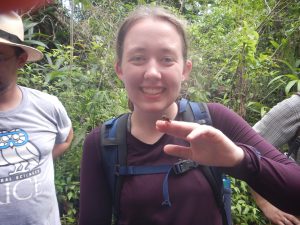
Then we went to a 15-20 year old nest slightly off trail in the woods. Scott started digging and we all took turns trying to shovel, but the ants just couldn’t seemed bothered. Turns out, we had dug up a dead fungi garden chamber and dumping ground. It was super weird; this was only the second time that Scott dug that up in his entire 17 years of ant experience!
That night, we checked out our camera traps. It was so AMAZING. On the first card that we looked at, there was a tapir taken one night and a jaguar the next night as the immediate next picture!! The shouts and hollers were amazing. Unfortunately, I don’t have access to those pictures right now, otherwise I would include them. For the rest of the pictures, we snapped a coatimundi, a 9-banded armadillo, 2 puma, several peccaries, male curassow, female curassow, and a coral snake. Apparently, this was the best luck in all of TFBs history.
We went to bed pretty late for a 4 am wake up call to leave Las Cuevas… Stay tuned!

